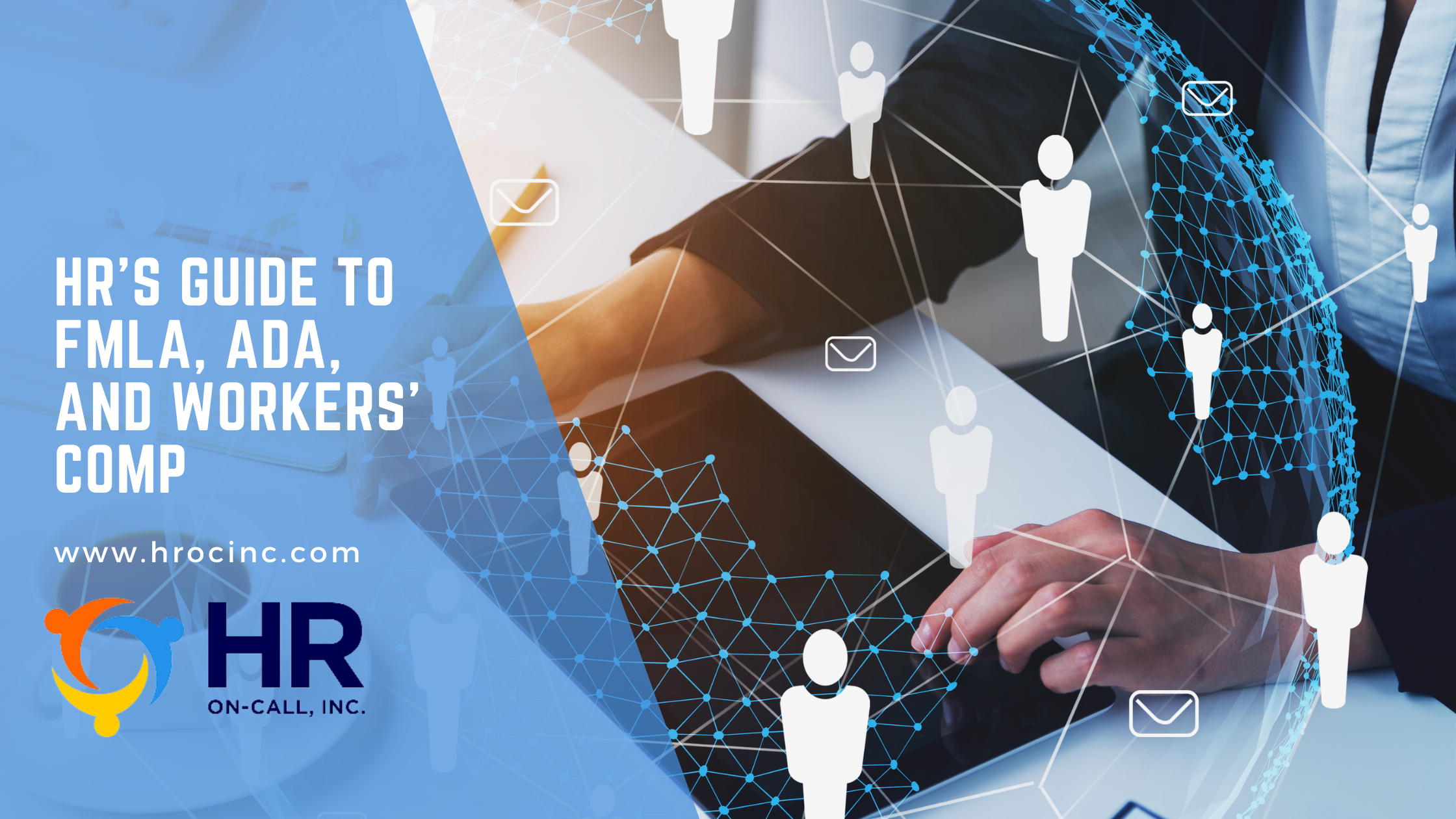As an HR professional, one of the most complex challenges you’ll face is navigating employee leave and accommodations—especially when multiple laws come into play. The Family and Medical Leave Act (FMLA), Americans with Disabilities Act (ADA), and Workers’ Compensation all provide essential protections for employees, but they have different purposes, rules, and timelines.
Understanding where these laws overlap and where they don’t is critical to ensuring compliance, minimizing liability, and supporting your team with confidence.
Let’s break it all down.
⚖️ The Purpose of Each Law
FMLA (Family and Medical Leave Act)
- Provides eligible employees with up to 12 weeks of unpaid, job-protected leave per year for qualifying family and medical reasons.
- Reasons include personal serious health conditions, caring for a family member, birth/adoption, or military-related leave.
- Applies to employers with 50+ employees.
ADA (Americans with Disabilities Act)
- Prohibits discrimination against qualified individuals with disabilities.
- Requires reasonable accommodations to enable the employee to perform essential job functions unless it causes undue hardship.
- Applies to employers with 15+ employees.
Workers’ Compensation
- Provides medical treatment, wage replacement, and other benefits to employees injured on the job.
- Mandated by state law (rules vary by state).
- Typically no-fault coverage: the employee is covered regardless of who caused the injury.
🔁 Where These Laws Overlap
While these laws serve different purposes, they can interact when an employee is injured, sick, or has a disability. Here’s how:
✅ An employee may qualify for all three simultaneously.
For example, if an employee:
- Is injured on the job (triggering Workers’ Comp)
- Needs time off to recover (FMLA may apply)
- Has long-term physical limitations after recovery (ADA accommodations may be required)
✅ Medical documentation may serve multiple purposes.
Documentation provided for Workers’ Comp can also support FMLA certification or ADA accommodation needs—but you’ll still need to follow the specific procedures for each.
✅ Job protection may come from FMLA, while benefits come from Workers’ Comp.
FMLA ensures the employee has a job to return to, but Workers’ Comp covers medical bills and partial income during recovery.
✅ ADA may extend leave beyond FMLA.
If the employee exhausts their 12 weeks of FMLA but still has a medical condition that qualifies as a disability, you may need to extend unpaid leave as a reasonable accommodation under ADA.
❌ Where They Don’t Overlap
Understanding what these laws don’t cover is just as important:
❌ Workers’ Comp is not job-protected leave.
It provides wage replacement and medical benefits, but doesn’t guarantee a job will be held. That’s where FMLA (if eligible) comes in.
❌ ADA doesn’t guarantee paid time off.
ADA focuses on accommodations, not compensation. It may support leave or job modifications—but not pay.
❌ FMLA leave is unpaid (unless you have a policy).
Unless you offer paid leave or the employee uses PTO concurrently, FMLA itself is unpaid.
❌ Eligibility requirements differ.
- FMLA requires 12 months of service and 1,250 hours worked.
- ADA has no length-of-service requirement.
- Workers’ Comp eligibility varies by state law, and is typically immediate upon hire.
🧩 How HR Can Coordinate Compliance
To stay compliant and support employees effectively, follow these best practices:
- Train managers to spot potential triggers for these laws.
- Evaluate leave eligibility under all three frameworks when an issue arises.
- Communicate clearly with employees about rights and responsibilities.
- Keep detailed documentation of all interactions and accommodations.
- Engage in the ADA interactive process when long-term health conditions arise.
- Don’t assume one law replaces another. Each has its own function.
📝 Final Thoughts
The intersection of FMLA, ADA, and Workers’ Comp can be a legal minefield—but it’s navigable with the right understanding and systems in place. These laws are designed to protect employees during life’s toughest moments—and HR plays a key role in making sure that protection is delivered with compassion and compliance.
When in doubt, consult with employment counsel or your insurance carrier’s HR support to ensure your actions are legally sound.

